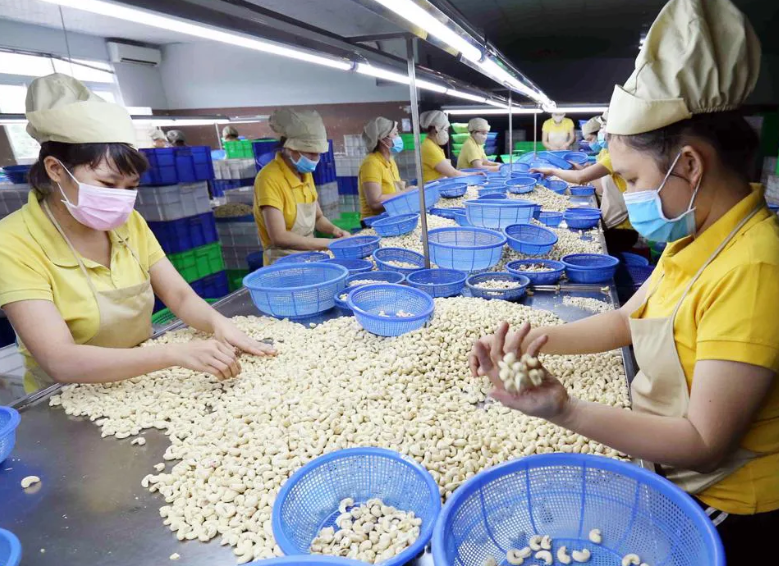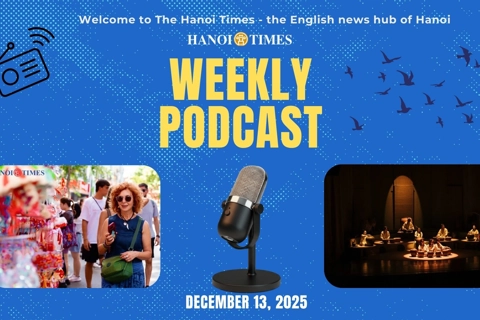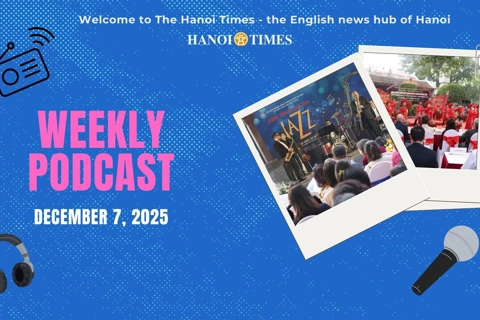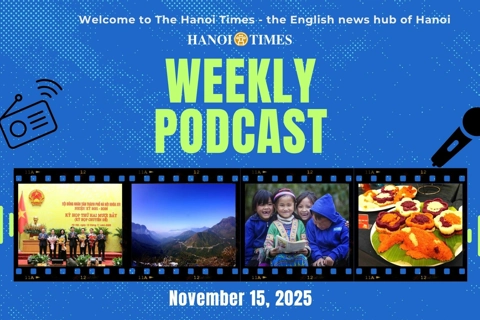From tariffs to tactics: Vietnam’s game plan to stay competitive in US market
THE HANOI TIMES — Enhancing product quality, improving design, developing brands, and integrating technology will help Vietnamese goods remain competitive even under higher tariffs.
The US reciprocal tariff poses not only direct challenges in the form of higher duties, but also indirect hurdles through stricter requirements on product quality and traceability.
Speaking to The Hanoi Times, economist Nguyen Tri Hieu stressed the need for Vietnam to help businesses increase production autonomy and tighten control over their supply chains to avoid being targeted by anti-circumvention trade measures when exporting to the US.

Economist Nguyen Tri Hieu.
Vietnam's exports are facing major challenges due to the imposition of reciprocal tariffs by the US. What should Vietnamese authorities and companies do to reduce their dependence on the US market?
I've analyzed this issue several times. In my opinion, Vietnamese businesses need to fully exploit potential markets by taking advantage of free trade agreements (FTAs) such as the EVFTA, CPTPP, and RCEP. These agreements offer opportunities to expand exports of Vietnam's key and competitive products to markets such as the EU, Japan, and Halal countries and improve Vietnam's position in global supply chains. In addition to being an engine for export growth, FTAs also serve as a shield against market risks.
However, expanding into new markets is always more challenging than holding onto existing ones due to the high cost. Therefore, it is essential to maintain the US market while diversifying both export and import markets.
The government should adopt proactive fiscal policies and flexible monetary policies to ensure macroeconomic stability. It should also develop supporting industries to reduce dependence on imported raw materials, and implement policies that support innovation, technology adoption, infrastructure improvement, and the development of financial markets to increase businesses' access to capital.
US trade remedy investigations have primarily targeted Vietnamese steel, wood, yarn, shrimp, and pangasius. What is your advice to those exporters?
The US still does not recognize Vietnam as a market economy, which can affect the outcome of anti-dumping and countervailing duty investigations. In such cases, the US uses surrogate prices to calculate normal value, which often leads to inflated anti-dumping duties that do not reflect the actual costs of producing and exporting in Vietnam.
This requires Vietnamese exporters to proactively keep detailed records and get ready to provide proof of origin for their export shipments to avoid high anti-dumping duties. The Ministry of Industry and Trade, together with relevant associations, should organize workshops to help businesses improve their supply chain management and avoid circumvention-related duties. At the same time, they should help companies source raw materials from countries not on the US restriction list, reducing reliance on inputs from China.

Production in the Hanoi Hi-tech Park. Photo: Pham Hung/The Hanoi Times
Many experts and policymakers have stressed the importance of developing Vietnam's supporting industries to cope with the US tariff policy. What is your opinion on this issue?
I fully agree. Vietnam needs to accelerate the development of its ancillary industries. The government should have dialogue with foreign direct investors, especially American companies, in specific sectors to explore the potential for increasing local content or sourcing more inputs directly from the US.
Currently, most foreign investors in Vietnam bring their suppliers from abroad and receive preferential treatment, while Vietnamese ancillary industries are left without a chance to grow. That's the core problem. To increase local content and the value of Vietnam's exports, the government must provide strong incentives to support the rapid and effective development of domestic supporting industries. This is not only a way to adapt to current challenges, but also a long-term strategy to make Vietnam's economy more resilient and competitive.
Is there any solution to increase the value of Vietnam’s export products?
Vietnam needs to move away from a low-cost export strategy and shift toward a value-added export model.
Moreover, the global trend towards green and sustainable consumption offers new opportunities for businesses that can meet environmental, traceability, and labor standards. This is the right time for Vietnam to invest more decisively in supporting industries, increase local content, and gradually gain control of the value chain. Over-reliance on imported materials not only increases costs but also makes businesses vulnerable to fluctuations in global trade.

Production of cashew nuts for export at Hapro's factory in Dong Thap Province. Photo: Hoai Nam/The Hanoi Times
Quality and traceability regulations are seen as major barriers to trade, along with US tariff policy. What is your view on this?
The US will continue to tighten rules of origin and increase scrutiny of transshipment activities, where goods are relabeled or repackaged in Vietnam to avoid tariffs on third-country products. This poses significant challenges for Vietnamese exporters and increases the cost of compliance with US standards.
Companies need to comply strictly with rules of origin and track the provenance of goods. This will also create opportunities for domestic materials. They must improve product quality to meet new US requirements and adapt to the evolving policy landscape.
I’m aware that the Ministry of Industry and Trade has issued early warning lists for 17 export sectors at risk of trade defense investigations or origin fraud. The US has a rigorous trade monitoring system and all the legal tools needed to address tax evasion or fraudulent labeling.
What is your advice to Vietnamese exporters in this context?
Under current rules, if the US detects transshipment or origin fraud designed to evade trade defense duties, it can impose punitive tariffs as high as 540%. This level of taxation would destroy the competitiveness of the affected goods. Vietnamese companies need to be aware of this risk and implement preventive strategies.
To minimize the risk of punitive US tariffs, Vietnam must increase transparency in its production processes and ensure a higher domestic content in exports to the US. This means that businesses must tightly control their supply chains and ensure that products are truly Vietnamese in origin with a sufficient local value-added component.
Moreover, Vietnam could encourage third-country investors to manufacture directly in Vietnam, rather than simply shipping in parts and raw materials. This would increase local content, raise the value of domestic production, and reduce the risk of anti-circumvention measures. However, the US also offers preferential treatment to imports that contain about 20% US-origin components. Vietnamese businesses should explore these opportunities.
Thank you for your time!











